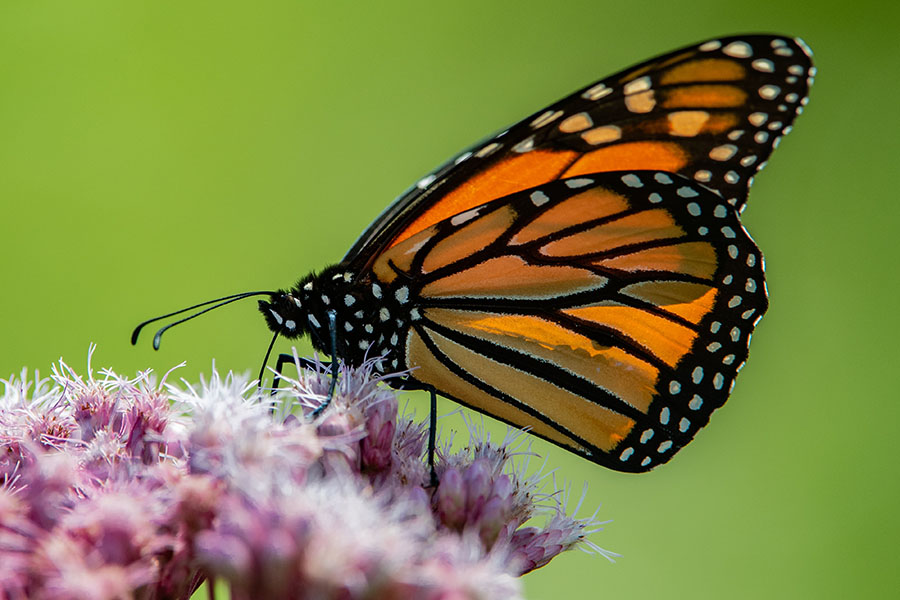The Monarch Butterfly became the Texas state insect by a 1995 resolution of the state legislature. The resolution was introduced by Representative Arlene Wohlgemuth on behalf of students in her district.
The Monarch is unique among butterflies in that it is the only species of butterfly that does not hibernate, but migrates in changing seasons. It undergoes four changes in form (metamorphoses) during its lifetime:
- It begins as a tiny egg.
- In the second stage it becomes a black, yellow and white striped caterpillar (larva). During this stage, the caterpillar sheds its skin (molts) up to four times as it grows to its full length of about two inches.
- In its third stage, the monarch forms a protective covering called a chrysalis, or pupa. This pupa is shiny and green with gold speckles.
- In its final stage, the monarch emerges from the pupa as a beautiful black and orange butterfly.
This entire process takes about a month. There are usually three to four generations of monarchs produced each year.
